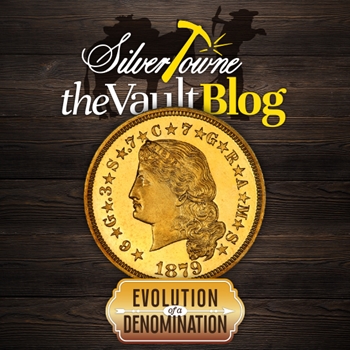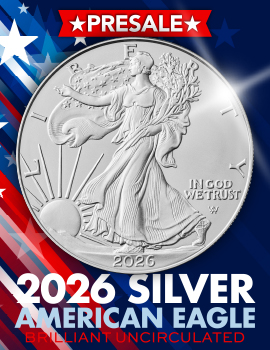
As the first half of the nineteenth century found Americans securing their destinies and finally being able to support itself with a focus on building wealth, ideas to expand beyond the borders of the United States began to increase. However, global environments were a mixed bag of competition and an oversupply of silver in the market. The U.S. would still try their hand at the worldwide coinage system and introduce ideas for an international gold coin. While most conversations ended at just that, conversations, it was not until 1879 when talk became reality and the introduction of a new gold coin would make its way into the market.
Stella (1879-1880)
It was Representative John Kasson who first suggested the four-dollar gold coin along with a “goloid” dollar to appease supporters of both international gold and silver coinage in 1879. The gold coin was to compete on a global scale among several pieces of similar value, including the French 20 franc coin, the Dutch and Austrian 8 florins, the Italian 20 lire, and the Spanish 20 pesetas.
The four dollar gold coin, also known as the Stella, which is Latin for “star,” features a five-pointed star on the reverse. There were two obverse designs in its short-lived run: one with the Flowing Hair obverse (Charles E. Barber) and the Coiled Hair obverse (George T. Morgan). While the Stella was introduced, it never saw production and only pattern coins were made, all of which were Proofs. Those that were struck were for congressman to examine. The 1880-dated coins were struck by Mint official in secret to sell to private collectors.
It is hard to know how many were known, but the 1879 Flowing Hair pattern was thought to have 425+ “restrikes” and only 15 originals. According to the 2024 Red Book, there are only 12 known 1879 Coiled Hair patterns. Year-dated 1880 gold patterns are even more rare with the Flowing Hair variety having only 17 known and the Coiled Hair variety just eight.
The four dollar gold coins are most often collected as type coins due to the fact that they were never actually released into circulation or produced as a regular issue. It is interesting to note that they were struck in several different alloys as pattern coins, including gold, aluminum, copper, and white metal. Stellas often in the marketplace are copper with gold plating.
After two years, the Stella was abandoned and never reintroduced again by the Mint. However, some of the finest Stella four dollar gold coins can be found at the National Numismatic Collection of the Smithsonian Institute. Others are in the hands of private collectors, and one will show up in auction every now and then.
Source: NGC Coin; The Official 2024 Red Book







